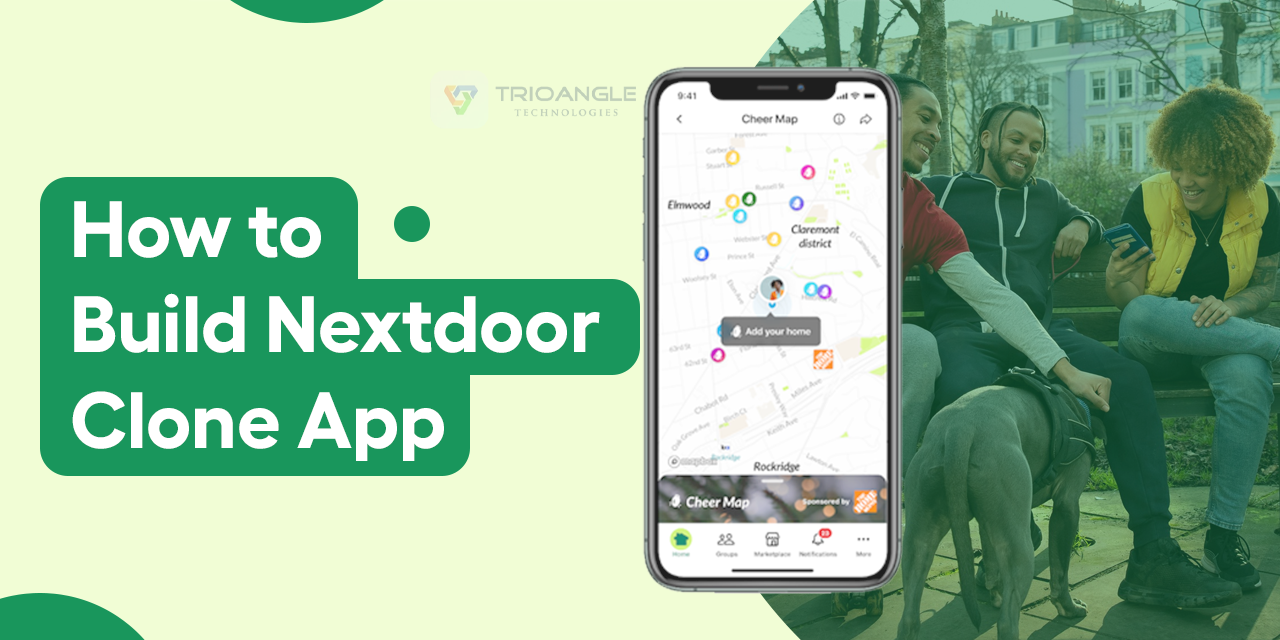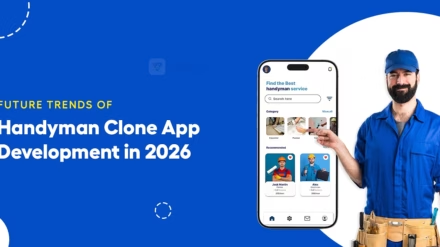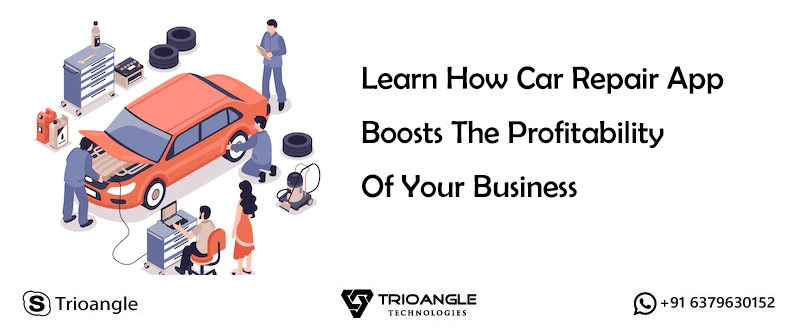The digital world has transformed how we interact and build communities. As the hyper-local social networking trend grows, neighborhood-focused platforms have gained popularity in recent years.
Nextdoor, a leading platform in this space, launched as a private social network for neighborhoods. It connects people within local communities, making it easier than ever to share information, organize events, and foster a strong sense of community.
As people increasingly seek localized, real-time interaction and updates on nearby happenings, building a Nextdoor clone script offers an excellent opportunity for aspiring entrepreneurs to tap into this niche.
If you’re considering building a community-centric app like Nextdoor, you’re in the right place.
This blog will guide you through everything you need to know to build a successful platform.
Let’s dive in!
Why Build a Nextdoor Clone App?
The hyper-local networking app market is growing rapidly as more users seek local connections and neighborhood-focused content. Demand for these platforms has surged, driven by the need for community engagement during the pandemic and the ongoing shift toward localized digital services.
The market for hyper-local apps is projected to grow at over 20% annually.
Nextdoor, in particular, had 500,000 total downloads in October 2024, with 500,000 for iOS apps and less than 5,000 for Android apps.
These apps are often used for local business promotions, classifieds, and event postings, meeting demand across different sectors like retail and services.
With the neighborhood-focused platform market expected to reach $13 billion by 2034, the demand is clear. This presents a great opportunity for aspiring entrepreneurs to enter the growing market by developing a Nextdoor clone script.
Now that you understand what is a Nextdoor clone app and recognize the growing demand for it, let’s move on to the key steps for building a successful Nextdoor-like app.
Steps to Build a Successful Nextdoor Clone App
The Nextdoor clone app development process involves several key steps that are crucial for success. Here’s the outline of the key stages to help you build your app effectively:
Conduct Market Research
Start by conducting thorough research to understand your target audience and current market trends. Study the preferences of users within various neighborhoods and analyze the features that make Nextdoor popular.
Identify gaps in the market, such as unmet user needs or potential improvements, which you could incorporate into your app.
This research stage will help you create an app like Nextdoor that meets specific neighborhood-related needs, differentiating your platform from general social networks.
Choose a Unique Value Proposition
Develop a unique value proposition (UVP) for your Nextdoor like app that highlights its benefits over other neighborhood platforms.
Identify what will set your app apart – whether it’s unique features, an exceptional user experience, or innovative community engagement tools. A clear UVP can help you build a loyal user base from the start.
Examples of a strong UVP:
- Enhanced privacy features for users.
- Improved neighborhood verification methods for authenticity.
- Exclusive features like “Lost and Found” sections to foster community support.
- Offering options for small businesses to connect with local users.
Choose the App Development Platform
When choosing the platform for your Nextdoor clone app, it’s important to first analyze the preferences and behaviors of your target audience. This will help you make an informed decision based on what your users need.
You can choose between Android, iOS, or both platforms. If you’re targeting a specific demographic, a single-platform app may be enough. However, if you want to reach a larger user base, consider developing separate apps for Android and iOS.
Consider developing a Progressive Web App (PWA), which offers users a similar experience across all devices without the need for multiple native apps.
Choose the Features for Your Nextdoor Clone App
Once you’ve selected the platform for your hyper-local app like Nextdoor, it’s time to decide on the features you want to include in your app. Start with a core set of essential features that meet user needs.
Here are some key features that you shouldn’t miss out on in your Nextdoor clone script:
- User Registration and Profiles: Allow users to sign up to the app using their email, phone numbers, or social media accounts. User profiles should include basic information to help personalize their experience.
- User Verification and Privacy: Users should be able to join specific neighborhood groups through verification methods like address verification to ensure security and trust.
- News Feed and Posts: Create a centralized news feed where users can post updates, share recommendations, or alert neighbors about relevant information.
- Groups and Events: Allow users to create and join groups based on shared interests or organize local events to foster community engagement.
- Buy and Sell Section: Provide a marketplace feature where neighbors can easily buy, sell, or exchange goods easily.
- Safety and Alerts: Add features like emergency alerts, neighborhood watch notifications, and safety tips to enhance community security.
- Local Business Listings: Provide a space for local businesses to advertise on the platform, enhancing community support.
- Messaging System: Provide a secure, direct messaging feature for private communication between users.
- Notifications: Provide real-time notifications to keep users informed about community activities and important announcements.
- Recommendations and Reviews: Provide a section where users can recommend and review local services, businesses, and professionals to support the local economy.
As your app gains popularity, consider adding more features based on market research and user feedback.
Select the Tech Stack
Selecting the right technology stack is essential to ensure your app runs smoothly and can handle multiple operations effectively. Here’s some tech stack that you can consider for your neighborhood app like Nextdoor:
- Front-End Development: Use React Native or Flutter for cross-platform functionality, enabling a consistent experience across devices.
- Back-End Development: Consider Node.js or Ruby on Rails to build a robust server-side framework.
- Database: Choose PostgreSQL or MongoDB to store and manage user data efficiently.
- Cloud Storage: Use Amazon Web Services (AWS) or Google Cloud for secure, scalable data management.
Choose technologies that are scalable, as the app may need to manage large amounts of user data as it grows.
Design and Develop Your Nextdoor Clone App
Once you have a clear roadmap and tech stack in place, it’s time to start designing and developing your Nextdoor clone app.
Focus on creating an intuitive, user-friendly interface with easy navigation and a visually appealing design. Prioritize clarity, consistency, and user-centered design principles to ensure a positive experience that encourages users to return.
Collaborate with a skilled development team to bring your design to life. Make sure they are familiar with your chosen tech stack and understand your vision. Furthermore, ensure they follow agile development practices for iterative progress and gather regular feedback to refine the app as it is being developed.
Test and Launch Your Nextdoor Clone App
Before going live, ensure your Nextdoor like app is bug-free and fully accessible. Conduct performance tests to assess load times, responsiveness, and app stability under various user conditions. Perform security testing to detect and resolve any vulnerabilities.
Additionally, conduct usability testing with real users to gather feedback on the app’s user experience and identify areas for improvement.
Once you’re confident in the app’s stability and performance, launch it on the Google Play Store and Apple App Store.
After the successful launch of your Nextdoor clone app, create a buzz by implementing marketing and promotional campaigns to attract users and drive downloads.
Continuously Improve Based on User Feedback
User feedback is crucial for long-term success. Regularly gather and analyze user feedback to understand evolving needs, address challenges, and identify areas for improvement.
This ongoing process ensures that your neighborhood app like Nextdoor remains relevant and competitive in a dynamic market.
Build Your Nextdoor Clone App Now!
So, this was everything you need to know about building a community-centric app like Nextdoor.
Creating a neighborhood platform isn’t just about entering a growing market; it’s about building a platform that connects people on a local level and enhances communication within communities. By following the key steps outlined in this blog, you can develop a Nextdoor like app that fosters real connections and strengthens neighborhoods.
Trioangle is your ideal partner if you want to develop a Nextdoor clone. With a team of skilled developers and extensive expertise, Trioangle can turn your vision into reality, helping you create a trusted community platform that brings neighbors together.
Are You Ready to Create Your Nextdoor Clone?








